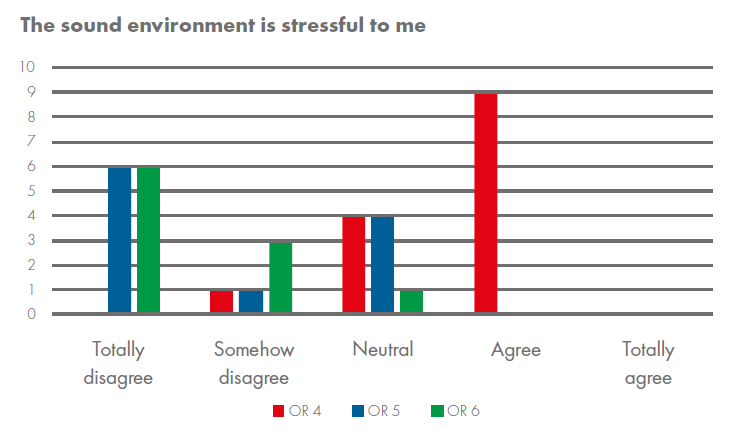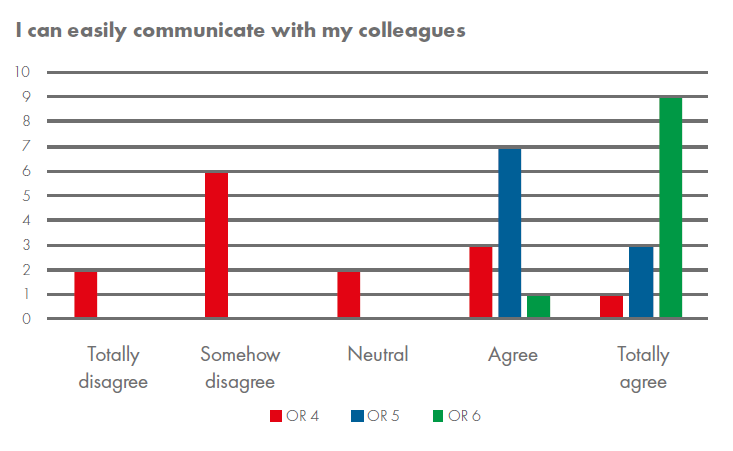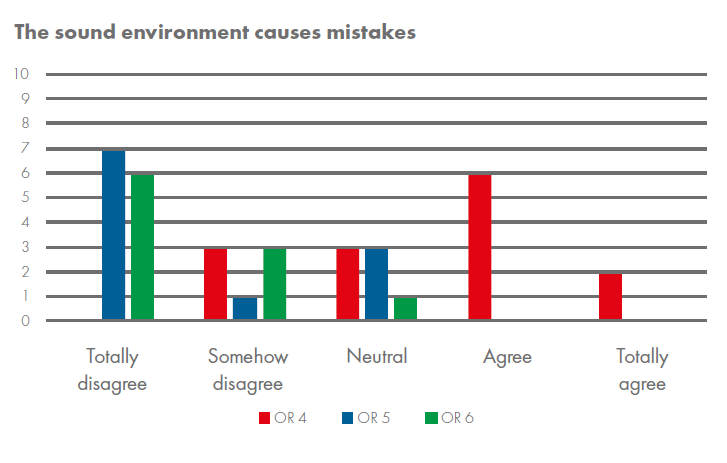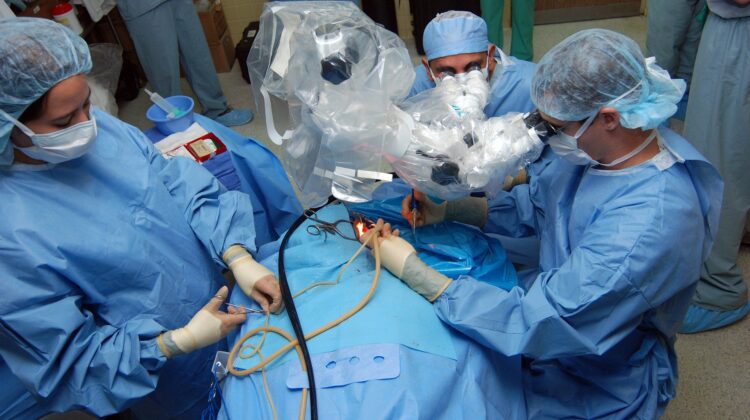
Introduction
Sustainable working environments include good room acoustics but working in and operation room (OR) can be a challenge. Due to hygiene regulations and demands the surfaces are often hard and reflective and this leads to high sound pressure levels, bad speech clarity and long reverberation times.
The Study
At Hvidovre Hospital in Copenhagen, Denmark three identical operation rooms were part of this research project. One room was used as a control room (OR 4). One went through an acoustic intervention with added acoustic absorbers in the ceiling (OR 5). And in the third room both an acoustic ceiling and wall absorbers were installed (OR 6). Questionnaires about the sound environment in general and the effect on wellbeing, mistakes and misunderstandings were completed by all staff members (nurses, doctors and other medical staff). Room acoustic measurements were done in all three rooms.
The rooms
The three rooms had the following dimensions:
- Control Room, OR 4: 38.6 m2, 135 m3
- Experimental Room, OR 5: 40.2 m2, 131 m3
- Experimental Room, OR 6: 38.6 m2, 135 m3
The acoustic ceiling in room 5 and 6 was installed in the middle of the ceiling (red area) – in total 14 m2. The wall panels in room 6 were installed as a frieze where the ceiling meets the walls (yellow area) – in total 21.6 m2.
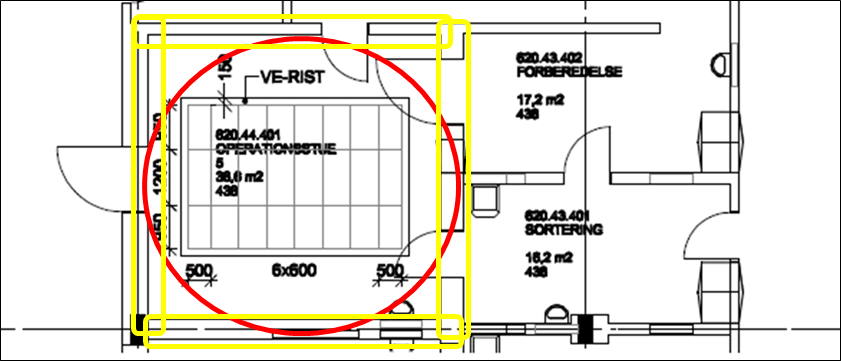
The results – rooms and questionnaires
Rooms
The room acoustic measurements were done in the three rooms and the descriptors evaluated were reverberation time (T20), Speech clarity (C50), Speech transmission index (STI) and sound propagation (Dl2). The results were as follows:
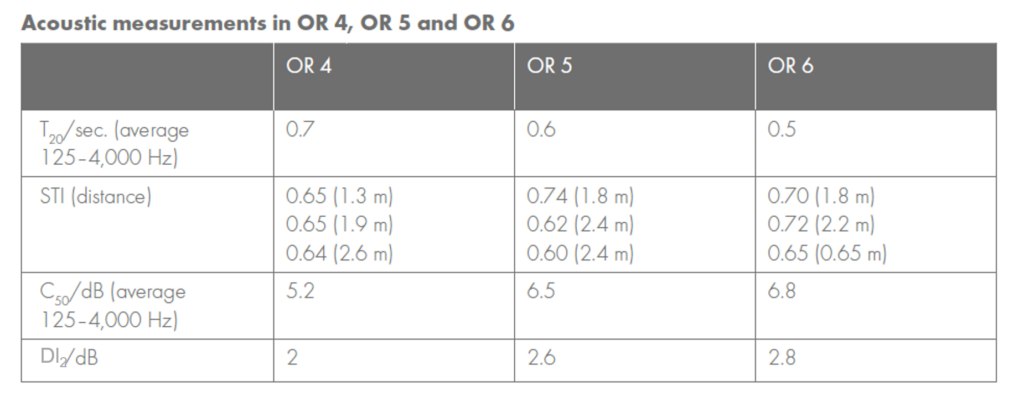
When looking at the acoustic measurements we see changes from one room to another . We see a trend that it gets better and better. The results though can look a bit limited on paper though since the differences from room to room are not huge. According to standard 3382-1 (1) Annex A the just noticeable difference for C50 is only 1 dB and for T20 only 5% . Such small numbers can have a remarkable effect on people. Also in this study.
Questionnaires
The staff were asked about the sound environment and there is no doubt that the room acoustic interventions were affecting them. Here are some of the results:
The staff members were asked more questions like ‘the sound environment makes me tired’, ‘the sound environment causes headaches’, ‘the sound environment makes us talk louder’ . And in all cases the trend was the same: In the control room staff were generally more disturbed and suffered because of the sound environment – and it got better and better as the acoustic treatment got better and better.
Statements
One of the staff members was hearing impaired and use hearing aids on both ears. She had the following statements:
About OR 4:
Sometimes is just want to turn them (the hearing aids) off – but I actually have to put up the volume to understand what the surgeon says!
I don’t know where the sound is coming from – I cannot orient.
About OR 6:
There is a huge difference in the sound environment when I compare a similar situation (in OR 4).
I don’t get the same amount of headaches, and I don’t feel tired the same way (as in OR 4).
The study will be presented both at Internoise 2019 and ICA2019 under the titles:
‘Impact of acoustics on staff performance in operation rooms.’
– and
‘The importance of several room acoustic descriptors in operation rooms.’

